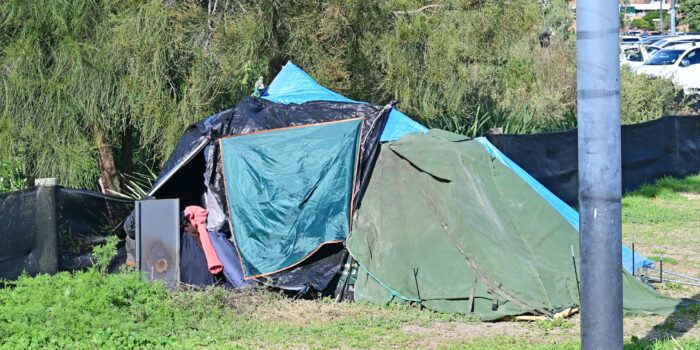One would have thought that all the stories of GFC related property calamities in Queensland had been told.

As the following account shows, property development mishaps from the GFC era are still winding their way through the courts.
Rory Quinn and husband John signed up through their company for the buy of a $2.5 mil industrial development site 5km to the south west of Yeppoon in October 2009.
They personally guaranteed the $3 million draw down by YIC Industrial Pty Ltd of acquisition funds for the 57 ha site and development finance, from financier Pioneer Australia which was to be repaid within 12 months on 15% interest.
The company sought approval from the Livingstone Shire Council for the development and rezoning of about half of the “rural” zoned site.
In October 2010, the then $3.5 million debt inclusive of capitalised interest was reduced by a single $235k payment and an extension until April 2011 was allowed for payment of the balance.
As frequently occurred with development loans during the peak of the GFC, the balance was not paid when due. Pioneer issued a default notice in May 2011 but at the depths of the financial crisis, took no immediate steps to recover its debt.
With the balance as at 31 January 2013 – including interest at the ‘higher’ loan rate of 20% – at $5 million, Pioneer agreed to treat the debt then due as being $4 mil if such sum and 15% interest thereon were to be paid in full within a further 12 months.
That agreement required YIC to make a lump sum payment of $250k – which was duly paid – and complete an upgrade of the nearby intersection of Rockhampton – Yeppoon Rd, which wasn’t completed.
As you might expect, the final deadline for payment was also not met. Pioneer entered into possession and effected a mortgagee sale of the site to the Livingstone Shire Council for $3.3 mil and sought to recover the balance $2.6 mil from the borrower and guarantors.
Pioneer calculated the total due to it at the date of its mortgagee-in-possession sale of the property at $5.93 mil – inclusive of interest at the “higher” rate of 20% rate from April 2011.
Quinn – the only guarantor named in the recovery proceedings – asserted that because the higher interest rate was only applicable on a ‘simple interest’ basis from the date of the final default occurred in January 2014, the debt due at the date of the sale of the property was a mere $4.74 mil.
For this argument she relied on the terms of the January 2013 deed of forbearance and the absence therein to any reference to compound interest.
The dispute was argued in the Queensland Supreme Court over four days in September 2018.
His honour Justice John Bond thought “it is commercial nonsense” to think the financier would – for $250k cash – surrender its right to recover $5 mil plus interest thereafter at 20%, in return only for only $4 mil plus interest at a lower rate.
Rather it was far more likely, he reasoned, the lender was holding out the prospect of a rebate so as to motivate YIC and the guarantors to do what had the deed required be done, was done on time.
In doing so they intended to leave the impact of the payment provisions in the original mortgage and security deed unamended, he ruled.
Thus the $5.93 mil total debt claim was upheld, leaving the company and the guarantor liable for a shortfall from the forced sale of $2.6 mil plus interest thereafter.
YIC’s second front was an argument that Pioneer had sold the site at a gross undervalue because it was worth far more that the $3.3 mil paid for it by the council.
That question became a contest between the two Michaels, Michael Murphy the expert valuer who reported for the developer and Michael Sheehan on whose valuation evidence Pioneer relied.
At issue was the relevance of a still current 2008 Council approval for the “general industry” use of 23 ha of the site and an expired January 2009 approval for reconfiguration of that part of the site into 21 lots.
The experts agreed – because the council after its acquisition of the site obtained approval to reconfigure the property into 23 lots – those potential lots should be valued by reference to comparable sales.
Murphy though, attributed 16 ha of the balance land as also likely available for industrial development, while the more pessimistic Sheehan disagreed with that notion.
All in all, the valuer’s opinions landed $6.6 mil apart.
In deciding between them, Justice Bond noted criticisms of both but thought Sheehan’s circumspect approach to the potential rezoning of any of the balance land, more persuasive.
“Any approval for industrial use that land could be between 10 and 20 years in the future”, noted his honour.
With interest of 20% pa compounding on the $2.6 mil owed as at early 2014, the balance of the mortgage debt had escalated to $6.4 mil by the time the dispute reached court. Additional interest since then put the total debt at the date of judgment at $7.15 mil which together with the proceeds of the sale and other payments made, totals up to nearly $11 mil.
The court also awarded indemnity costs against the developer.
Pioneer Australia Pty Ltd & Anor v Quinn [2019] QSC 72 Bond J, 26 March 2019





